
Tis’ the season for carolling and gifting!! Christmas is the time to spend time with your family and enjoy the festive mood around the neighbourhood. This festival is of grave importance to the Christian culture since it celebrates the birth of Jesus Christ. We can see houses decorated with vibrant lighting, small statues of elves, snow (of course), Christmas special cakes, and Christmas special Hanging Door Ring!!
Did you know that the term ‘Christmas‘ originates from the words ‘Cristes Maesse‘, which means ‘mass of Christ‘!? Christmas’ history dates back to over 4000 years ago as several customs and traditions were celebrated before the birth of Christ. We can trace Christmas’ origin back to some civilizations that gave way to this festival.
- Mesopotamian (New Years)– Several traditions began from the Mesopotamian culture. The people believed in many Gods, but one chief God- Marduk. In his battle with monsters of chaos every year, the Mesopotamians would assist Marduk by holding a festival known as Zagmuk, lasting for 12 days.
- Scandinavia (Yuletide)– Scandinavia is the Northern part of the European continent where, during winter, the Sun would disappear for months. Villages would send scouts to track the Sun’s first light. After any sightings of the Sun, people would organise a festival called the Yuletide, which would consist of huge feasts and have a bonfire made from the Yule log.
- Roman (Saturnalia)– For Romans, this festival began in mid-December, ending on January 1st. They named the festival Saturnalia as they worshipped their God, Saturn. Celebrations included masquerades in the streets, festival meals, visiting friends, and exchanging gifts called Strenae.
- Persians and Babylonians (Sacaea)– This culture follows a unique way to celebrate where the slaves were the masters, and the masters were to obey them.

Throughout its history, Christmas has had many names. Nativity, meaning ‘birth’, originates from the Latin word, ‘nativitas‘. Christmas also derives from Christenmasse, meaning “Christian Mass“. However, some say it was the date of Winter Solstice according to the Roman calendar, which was nine months after March 25, the date of Vernal Equinox and the date linked to Jesus’s conception. The first recorded Christmas celebration was in Rome on December 25, A.D.336.
But some wonder, how did Santa Claus come into existence?! We all know Santa Claus is a prominent figure wearing red and white clothes and is portrayed with his eight flying reindeers. The American version of Saint Nicholas, or Santa Claus, originates from the Dutch version called ‘Sint Klass‘. Over the years, Santa’s visual forms have developed. According to folklore, Santa Claus’s home situates near the North Pole and has a habit of filling people’s stockings with gifts on the night of 24th December.
Even though the celebrations are grander every year, the traditions remain among the Christian community-
- Usually, Catholics visit Church mass early in the morning for their prayers. According to a study, Christmas and Easter have the highest attendance in Churches.
 For decorations, usually, red, green, and golden are the primary colours, where red symbolizes the blood of Jesus, shed during the crucifixion. The green colour represents eternal life, specifically the evergreen tree, which does not shed its leaves during winter. The colour gold portrays Royalty and is one of the three gifts of the Magi. People put up different statues of Santa, reindeers, and elves to decorate their houses with colourful lights. Bells, candy canes, candles, stockings, and wreaths are a few traditional decorative items.
For decorations, usually, red, green, and golden are the primary colours, where red symbolizes the blood of Jesus, shed during the crucifixion. The green colour represents eternal life, specifically the evergreen tree, which does not shed its leaves during winter. The colour gold portrays Royalty and is one of the three gifts of the Magi. People put up different statues of Santa, reindeers, and elves to decorate their houses with colourful lights. Bells, candy canes, candles, stockings, and wreaths are a few traditional decorative items.- During Christmas, the nativity play is one of the oldest traditions originating in A.D.1223 by Francis of Assisi. The play depicts the birth of Jesus Christ.
- Folk music and carols are the best way to get into the mood for Christians. They sing different songs, which originated in the 9th and 10th centuries. Groups of people roam on the streets and visit various homes to spread the holiday cheer.
- Exchanging gifts is probably one of the most important traditions in recent times. Some say the gift-giving tradition started from the Roman celebration of Saturnalia. According to the culture, gifts are wrapped well in advance and kept beneath the Christmas tree for everyone.
Christmas is time to get together with your family and enjoy the festive treats to satisfy your belly. People enjoy delicacies that are available only at this time of the year.
 Pudding is also a popular delicacy which people specially prepare during this season. It is part of almost every Christmas dinner, mainly in the U.K. and Ireland.
Pudding is also a popular delicacy which people specially prepare during this season. It is part of almost every Christmas dinner, mainly in the U.K. and Ireland. - Christmas brings us different types of cakes (of course) but the main attraction of the cakes are the Rum Cake and Plum Cake. Rum cake consists of dried fruits soaked in rum for at least a month and then baked to perfection.
- Eggnog is an alcoholic and, dairy based-beverage often found at everyone’s home during Christmas. Its origins trace to the United Kingdom and the U.S. The ingredients are mainly sugar, milk, cream, whipped egg, and alcohol of choice.
- Cranberry sauce is also a must at every Christmas party. Also known as Cranberry jam, the first recipe for this dish dates back to a cookbook published in 1796.
- Gingerbreads are a popular snack during this festival and are prepared in two types- Gingerbread man and a Gingerbread house. It’s flavoured using different spices like cloves, nutmeg, cinnamon, honey, and molasses.
Well, all this has got me in the mood to decorate my house with all the Christmas goodies and enjoy some festive treats with my friends and family. Let us know how you are celebrating the season of gifting!!

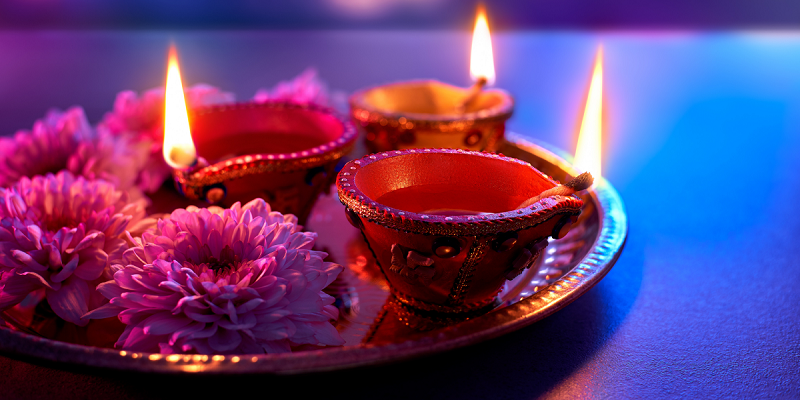

 with Lord Indra and resulted in thunderstorms and torrential rains in the village. In the end, Lord Krishna saved the villagers after lifting a mountain with his finger and protecting everyone under its shelter.
with Lord Indra and resulted in thunderstorms and torrential rains in the village. In the end, Lord Krishna saved the villagers after lifting a mountain with his finger and protecting everyone under its shelter. Hindu month Kartik and the beginning of Diwali. Many clean their homes and business premises and decorate them with several elements. Diyas, rangoli, lamps, unique strings of lighting patterns culminate to give it a vibrant feel. In the evening, families devote their time for prayers to Lord Ganesha and Goddess Lakshmi. This day also marks a shopping day to purchase new items for yourself and your family.
Hindu month Kartik and the beginning of Diwali. Many clean their homes and business premises and decorate them with several elements. Diyas, rangoli, lamps, unique strings of lighting patterns culminate to give it a vibrant feel. In the evening, families devote their time for prayers to Lord Ganesha and Goddess Lakshmi. This day also marks a shopping day to purchase new items for yourself and your family. Krishna before distribution.
Krishna before distribution. Nariyal Barfi,
Nariyal Barfi,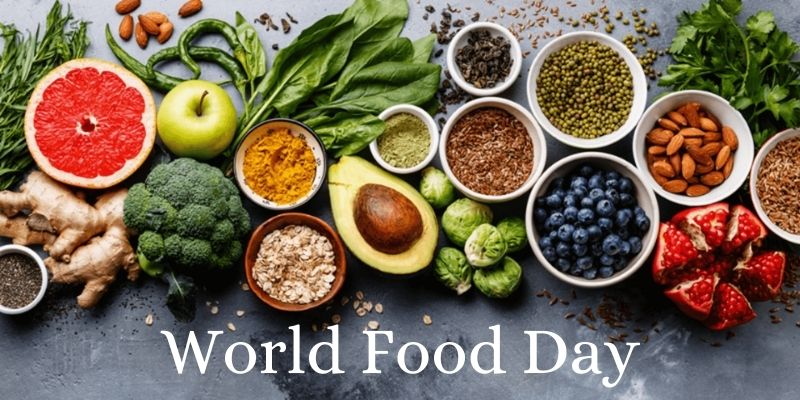
 To reduce these issues, the United Nations commemorates International World Food Day on 16th October. It’s the date for founding the United Nations Food and Agriculture Organization in 1945. Moreover, the World Food Program celebrates this day to combat hunger and food security, which led to winning the Nobel Prize for Peace in 2020. It was a result of fighting against hunger, bringing peace in conflict areas, and stopping the use of hunger as a form of a weapon for war.
To reduce these issues, the United Nations commemorates International World Food Day on 16th October. It’s the date for founding the United Nations Food and Agriculture Organization in 1945. Moreover, the World Food Program celebrates this day to combat hunger and food security, which led to winning the Nobel Prize for Peace in 2020. It was a result of fighting against hunger, bringing peace in conflict areas, and stopping the use of hunger as a form of a weapon for war. A study by the FAO (Food and Agriculture Organisation) indicates around 190 million people in India are undernourished. Furthermore, the Global Hunger Index ranks India 94th out of 107 countries. Moreover, nearly 1/3rd of the food produced in India goes to waste. This factor adds to the existing problem of malnutrition in the country and shows that India still needs to improve.
A study by the FAO (Food and Agriculture Organisation) indicates around 190 million people in India are undernourished. Furthermore, the Global Hunger Index ranks India 94th out of 107 countries. Moreover, nearly 1/3rd of the food produced in India goes to waste. This factor adds to the existing problem of malnutrition in the country and shows that India still needs to improve.
 Furthermore, during this month, devotees avoid warfare or any violence since it’s one of the holiest months. It’s the month of remembrance as people honour the martyrs and abstain from joyous events. Also known as the Mourning of Muharram, the Tenth day of Muharram is called the Day of Ashura. While the Shia Muslims mourn the tragedy of Imam Hussein’s family, the Sunni Muslims practice fasting on Ashura. Ashura means ‘Tenth‘ and refers to the tenth day of Muharram. The mourning begins from the first night and climaxes on the tenth night of Muharram.
Furthermore, during this month, devotees avoid warfare or any violence since it’s one of the holiest months. It’s the month of remembrance as people honour the martyrs and abstain from joyous events. Also known as the Mourning of Muharram, the Tenth day of Muharram is called the Day of Ashura. While the Shia Muslims mourn the tragedy of Imam Hussein’s family, the Sunni Muslims practice fasting on Ashura. Ashura means ‘Tenth‘ and refers to the tenth day of Muharram. The mourning begins from the first night and climaxes on the tenth night of Muharram.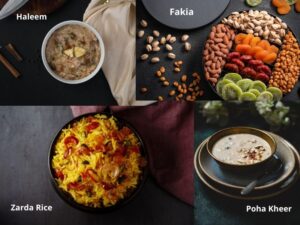
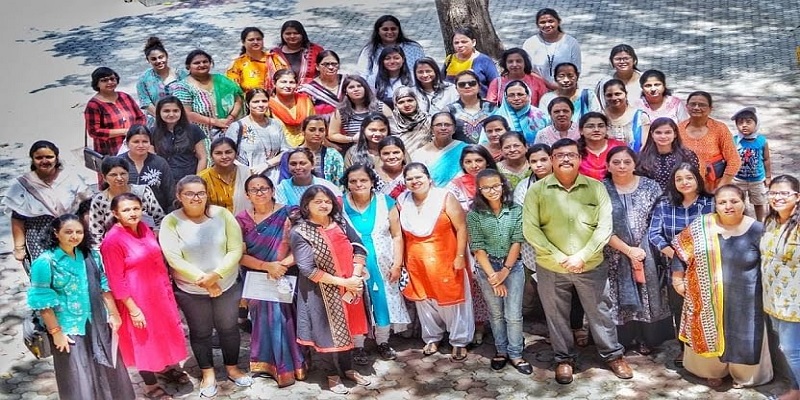
 However, in the present world, food fusion is a common culture among the masses. ‘Westernisation’ of different cultures has led to people losing their grip on their roots. Traditional delicacies that have been in the families for generations are slowly disappearing. But after the pandemic, people have realised the importance of home-cooked food; this has bred a new demand, and slowly, there’s a concept of home-chefs popularising in today’s world. But for
However, in the present world, food fusion is a common culture among the masses. ‘Westernisation’ of different cultures has led to people losing their grip on their roots. Traditional delicacies that have been in the families for generations are slowly disappearing. But after the pandemic, people have realised the importance of home-cooked food; this has bred a new demand, and slowly, there’s a concept of home-chefs popularising in today’s world. But for  “I wanted to give the home-cooks a sense of independence by helping them earn money with the help of their passion of cooking”. Leena was shortlisted in IIM Bangalore because of her concept and was able to make it a scalable model over the course of three years. Now,
“I wanted to give the home-cooks a sense of independence by helping them earn money with the help of their passion of cooking”. Leena was shortlisted in IIM Bangalore because of her concept and was able to make it a scalable model over the course of three years. Now, 
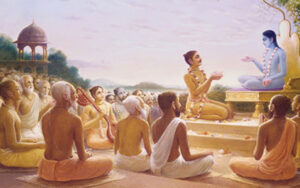


 3. Dhanurasana (Bow Pose) – Stretching the entire body, it aids in weight loss and boosts digestion. It helps make the back flexible and also helps increase the blood circulation in the body.
3. Dhanurasana (Bow Pose) – Stretching the entire body, it aids in weight loss and boosts digestion. It helps make the back flexible and also helps increase the blood circulation in the body. 4. Vakrasana (Twisted Pose) – An intriguing pose, it helps in making the body flexible and reduces belly fat. As it regulates digestive juices, it also helps in improve digestion
4. Vakrasana (Twisted Pose) – An intriguing pose, it helps in making the body flexible and reduces belly fat. As it regulates digestive juices, it also helps in improve digestion 5. Bhujangasana (Cobra Stretch) – This pose basically corrects your posture and makes your spine flexible.
5. Bhujangasana (Cobra Stretch) – This pose basically corrects your posture and makes your spine flexible.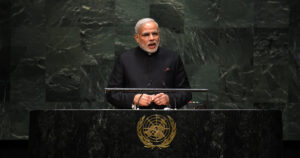
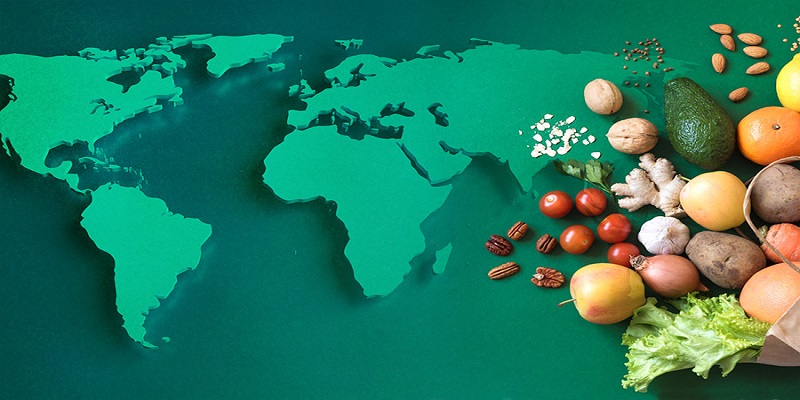
 Food is a necessity for all living beings in this world. However, ‘food safety’ is a critical stage in guaranteeing that food stays safe at every stage of the food chain. Access to a good chunk of hygienic food is key to maintaining a long life and promoting good health. It’s estimated that there are about 600 million cases of food-related diseases every year. Unsafe food poses a grave threat to human health as illnesses are usually infectious or toxic in nature. These are often caused by different types of bacteria, viruses, or chemical substances and enter the body through various means.
Food is a necessity for all living beings in this world. However, ‘food safety’ is a critical stage in guaranteeing that food stays safe at every stage of the food chain. Access to a good chunk of hygienic food is key to maintaining a long life and promoting good health. It’s estimated that there are about 600 million cases of food-related diseases every year. Unsafe food poses a grave threat to human health as illnesses are usually infectious or toxic in nature. These are often caused by different types of bacteria, viruses, or chemical substances and enter the body through various means. June. The year 2018 saw the first year for World Food Safety Day in an effort to reduce the burden of foodborne diseases.
June. The year 2018 saw the first year for World Food Safety Day in an effort to reduce the burden of foodborne diseases.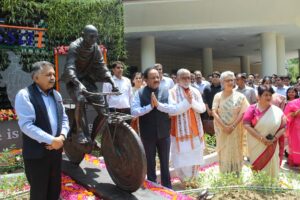 In India, the first World Food Safety Day was celebrated on 6th June and was kicked-off at the FSSAI headquarters to commend the remarkable work of food businesses and individuals to promote food safety. Awareness for food safety has risen in recent times and everyone strives to procure safe and hygienic food. Foodborne diseases are gradually decreasing and we will be able to tackle this situation in the near future.
In India, the first World Food Safety Day was celebrated on 6th June and was kicked-off at the FSSAI headquarters to commend the remarkable work of food businesses and individuals to promote food safety. Awareness for food safety has risen in recent times and everyone strives to procure safe and hygienic food. Foodborne diseases are gradually decreasing and we will be able to tackle this situation in the near future. promote eating freshly cooked food.
promote eating freshly cooked food.

 In 1990, the Earth Day movement went global, mobilizing millions of people from hundreds of countries and lifting environmental issues to a global stage. Like a raging fire, this movement spread to corners of every country, making it a large-scale mission to save the Earth. While the movement went global, it gave a big boost towards recycling and helped pave the way for a United Nations Summit. However, this was only the first step towards a long and conserved future for coming generations.
In 1990, the Earth Day movement went global, mobilizing millions of people from hundreds of countries and lifting environmental issues to a global stage. Like a raging fire, this movement spread to corners of every country, making it a large-scale mission to save the Earth. While the movement went global, it gave a big boost towards recycling and helped pave the way for a United Nations Summit. However, this was only the first step towards a long and conserved future for coming generations. With these developments over the years, one this is for certain- the ravages of climate are more apparent than before!! Large scale fluctuations in weather affects flora and fauna. But with the help from the new generation, we can have a fiercer movement to save the natural beauty of our planet. Only with small changes today, can we have a large impact tomorrow. Let us all save the environment today, so that the next generation may have a better future!!
With these developments over the years, one this is for certain- the ravages of climate are more apparent than before!! Large scale fluctuations in weather affects flora and fauna. But with the help from the new generation, we can have a fiercer movement to save the natural beauty of our planet. Only with small changes today, can we have a large impact tomorrow. Let us all save the environment today, so that the next generation may have a better future!!
 Do you know that chocolate is one of the oldest sweets in the world? The history of chocolates dates back to the Mayans, Aztecs, and Olmecs of Southern Mexico. According to some research, there are traces in the Olmec culture that are from around
Do you know that chocolate is one of the oldest sweets in the world? The history of chocolates dates back to the Mayans, Aztecs, and Olmecs of Southern Mexico. According to some research, there are traces in the Olmec culture that are from around 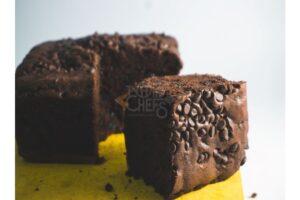 Over the years we have seen chocolate in various forms and companies developing different types of products to attract consumers. We have common chocolate bars, which are available readily in all types of stores.
Over the years we have seen chocolate in various forms and companies developing different types of products to attract consumers. We have common chocolate bars, which are available readily in all types of stores.  But what are some of the top chocolatiers?? European countries like Switzerland and Belgium are the chocolate capitals in the world. Also, leading brands like Cadbury, Ferrero, Guliyan, Hershey’s, Lindt, just to name a few are some of the best brands and have the finest quality of chocolates.
But what are some of the top chocolatiers?? European countries like Switzerland and Belgium are the chocolate capitals in the world. Also, leading brands like Cadbury, Ferrero, Guliyan, Hershey’s, Lindt, just to name a few are some of the best brands and have the finest quality of chocolates.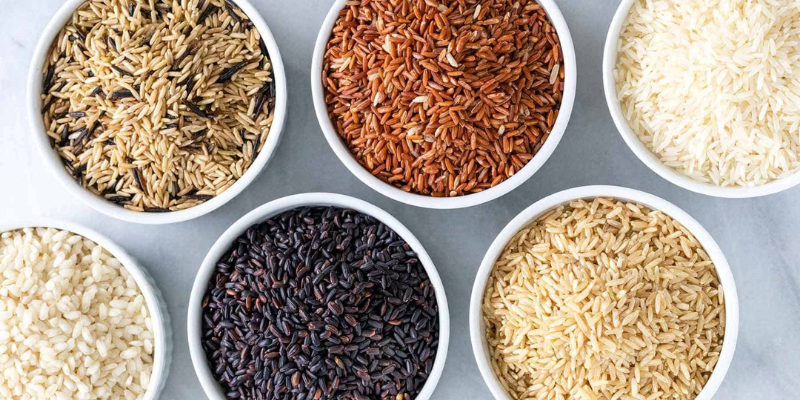
 Despite its picturesque location and Instagram-worthy holiday pictures, there is a lot about this region that we still don’t know- including its cuisine. For instance, did you know that this region alone is the largest contributor of tea to our country?
Despite its picturesque location and Instagram-worthy holiday pictures, there is a lot about this region that we still don’t know- including its cuisine. For instance, did you know that this region alone is the largest contributor of tea to our country? Kabok, a Laddu made from puffed rice and sugarcane syrup is a traditional dish of Manipur; while Apong, a healthy drink made from rice and millets is a local favorite of Arunachal Pradesh. Here, you will also find powdered rice used in Wungwut Ngam- a slow-cooked chicken side dish flavored with local spices.
Kabok, a Laddu made from puffed rice and sugarcane syrup is a traditional dish of Manipur; while Apong, a healthy drink made from rice and millets is a local favorite of Arunachal Pradesh. Here, you will also find powdered rice used in Wungwut Ngam- a slow-cooked chicken side dish flavored with local spices. Steering towards Nagaland, Assam, and Meghalaya- one will find the tastiest varieties of seasoned and dry-aged pork in their kitchens for round-the-year usage. Dishes thus prepared are often served with steaming hot rice and use plenty of ginger, garlic, and Bhut Jhalokia- the spiciest chillies in the world. The most beloved dish of Meghalaya is ‘Jadoh’, a type of pork biryani cooked in its fat with a different set of spices. Assamese, although not big on meat, widely use chicken, fish and duck meat in their diet along with rice, of course!
Steering towards Nagaland, Assam, and Meghalaya- one will find the tastiest varieties of seasoned and dry-aged pork in their kitchens for round-the-year usage. Dishes thus prepared are often served with steaming hot rice and use plenty of ginger, garlic, and Bhut Jhalokia- the spiciest chillies in the world. The most beloved dish of Meghalaya is ‘Jadoh’, a type of pork biryani cooked in its fat with a different set of spices. Assamese, although not big on meat, widely use chicken, fish and duck meat in their diet along with rice, of course! Rightly known as the rice bowl of India, Chattisgarhi cuisine revolves around rice dishes. Although it has many dishes to offer, their most famous contribution to breakfast- the Mona-Lisa of breakfast if you may- is the rice Chila. Made from rice and Urad dal batter, this is a quick, light and healthy start to your day. Other must-try dishes are Farra and Dubki Kadhi Chawal.
Rightly known as the rice bowl of India, Chattisgarhi cuisine revolves around rice dishes. Although it has many dishes to offer, their most famous contribution to breakfast- the Mona-Lisa of breakfast if you may- is the rice Chila. Made from rice and Urad dal batter, this is a quick, light and healthy start to your day. Other must-try dishes are Farra and Dubki Kadhi Chawal. While rice definitely forms the base for almost all south Indian dishes, the cuisine, however, is packed with spicy flavors. They have Pulihaara (tamarind rice), Pesarattu (rice batter pancake), Bisi Bele Bhaat (rice dish cooked with spices and vegetables) and the oh-so-famous
While rice definitely forms the base for almost all south Indian dishes, the cuisine, however, is packed with spicy flavors. They have Pulihaara (tamarind rice), Pesarattu (rice batter pancake), Bisi Bele Bhaat (rice dish cooked with spices and vegetables) and the oh-so-famous 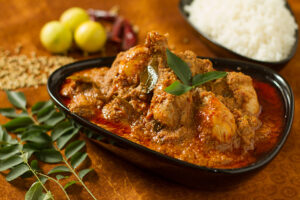 The most famous curry from Tamil Nadu- Chettinad chicken curry is a spicy blend of coconut, black peppercorns, and red chilies. This curry is also amongst one of the spiciest in our country!
The most famous curry from Tamil Nadu- Chettinad chicken curry is a spicy blend of coconut, black peppercorns, and red chilies. This curry is also amongst one of the spiciest in our country!